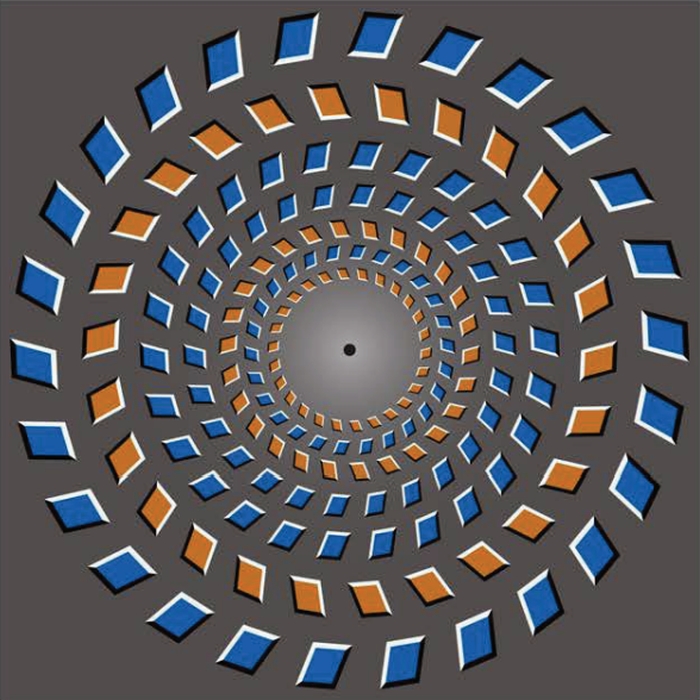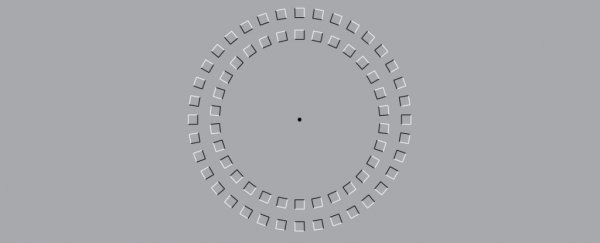The Pinna-Brelstaff illusion is tremendous fun: concentric rings of shapes, with inverse shading. When you move your head closer to or farther from the illusion, the rings appear to rotate, expand, and contract (go ahead, we'll wait while you try this with the picture above).
We know the shading effect plays a role in tricking our brains into perceiving motion, even though there's none at all; after all, it's well documented that our eyes are lying liars. But now a team of scientists has peered inside human and monkey brains in two separate studies to try to figure out what's actually happening when you stare at those rings.
"The neural basis of the transformation from objective reality to illusory percepts of rotation, expansion and contraction remains unknown," the researchers wrote in their paper.
"Studying the mismatch between perception and reality helps us better understand the constructive nature of the visual brain."
Last year, researchers at the Chinese Academy of Sciences used functional magnetic resonance imaging (fMRI) to study the brains of 42 humans observing the illusion under different conditions. However, fMRI is limited - it can't reveal the underlying neural mechanisms.
So the researchers turned to male rhesus macaques (Macaca mulatta), inserting electrodes into their brains to analyse the activity in greater detail.
First, they had to determine whether the macaques can even perceive the illusions. They had nine human volunteers and two macaques study the illusion (with their heads stabilised) to record rapid eye movements - called saccades - in response to the perception of motion.
 The Pinna-Brelstaff figure used in the experiment. (Luo et al., Journal of Neuroscience, 2019)
The Pinna-Brelstaff figure used in the experiment. (Luo et al., Journal of Neuroscience, 2019)
The humans quantified the effect of the illusion - for example, whether the rotation was clockwise or counter-clockwise, and whether it was expanding or contracting when the illusion moved closer or farther.
Both the monkeys and the humans had similar saccade responses, meaning it's very likely that the monkeys indeed perceived the illusion similarly to how humans do.
Recording the brain activity was the next part. After recovering from the surgery to implant the electrodes, the monkeys were shown the illusion and animations. They weren't told which was which; they were only trained to indicate the direction of the rotation, and whether the figure was expanding or contracting.
The team found that the illusions activate the same part of the brain as actual motion, indicating that the brain processes illusory and real motion with the same neurons.
But there was a difference: the neurons took about 15 milliseconds longer to process illusory motion than real motion.
It's not exactly clear what causes this delay, but the researchers believe that the brain might be using the extra time to register the difference between illusory motion and real motion.
In other words - it might look like motion, but the deep inner recesses of your brain might know something is fishy, and are taking a fraction of a second to mull it over. We'll need a bit more work to confirm this, though.
We do know that humans and monkeys appear to perceive the Pinna-Brelstaff illusion in the same way; that the same region of the brain processes both real and illusory motion; and that monkeys have a 15-millisecond lag when processing illusions.
It stands to reason that human brains do the same, but it will require further research to confirm; and also to figure out what that wacky lag is all about.
"The question remains," the researchers wrote, "as to whether these higher brain areas in the primate dorsal visual stream distinguish between real and illusory motions during active perception."
The team's research has been published in the Journal of Neuroscience.
